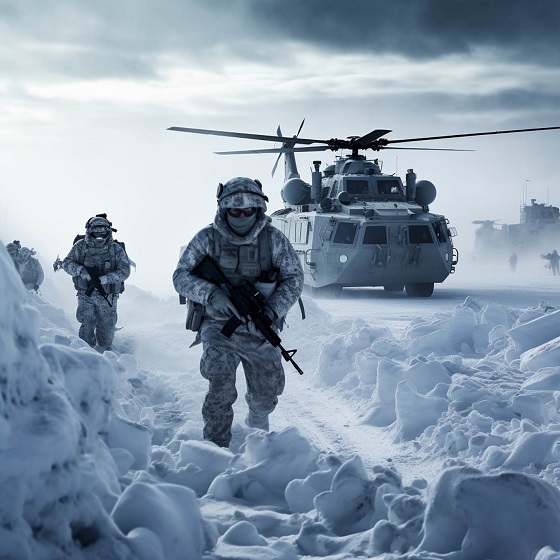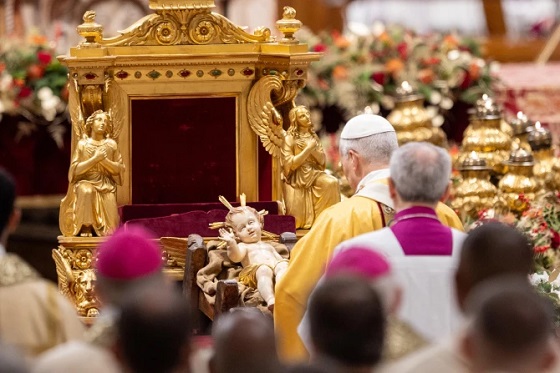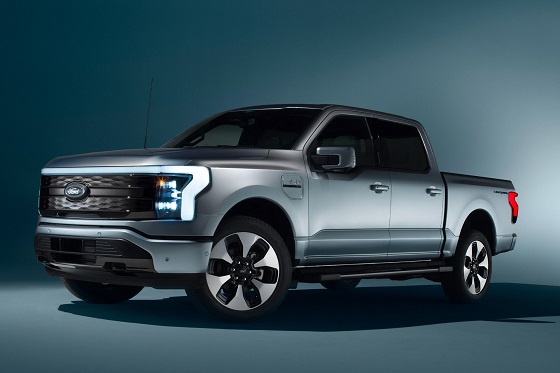Business
Journalists should not be paid by the government

From the Canadian Taxpayers Federation
Author: Kris Sims
Trust in journalism is crumbling while government funding of the media ramps up.
The Trudeau government is currently in a spat with tech giants Google and Facebook which could cost taxpayers big money.
Bill C-18 is forcing internet companies to pay media corporations when links to news stories are posted. In retaliation, the companies are vowing to block news links from their services.
The brass from media companies say if their news links are banned, they will lose out on millions of dollars.
What happens if Big Tech refuses to pay?
This Trudeau government is eager to have a place in the newsrooms of the nation.
“We have to make sure that newsrooms are open, that (journalists) are able to do their job and (they) have the resources necessary,” Heritage Minister Pablo Rodriguez told reporters.
In government speak “resources” means taxpayers’ money.
It’s time to set out a fundamental truth: having the government sign the paycheques of journalists who are supposed to impartially cover that very same government is a massive conflict of interest.
Columnist Andrew Coyne penned it well back in 2019 when the so-called media bailout was first being hatched:
“Taking money from the people we cover will place us in a permanent and inescapable conflict of interest; that it will produce newspapers concerned less with appealing to readers than to grantsmen.”
Fast forward four years and those media bailout deals are coming up for renewal, with the funding set to run out at the end of the fiscal year.
According to the heritage minister wielding the taxpayer piggybank, it sounds like more government-funded media is on the way.
That’s the last thing we need.
The CBC already gets more than $1.2 billion in taxpayers’ money every year and the feds budgeted $595 million for the media bailout over the past four years.
This means taxpayers have poured about $5.3 billion into the CBC and private-sector newsrooms over the last four years.
That kind of money would buy a year’s worth of groceries for about 350,000 families. It could cover the annual income tax bill of more than 380,000 people – about the population of London, Ontario. It could buy about 7,400 homes.
This government-funded media scheme isn’t just a waste of money, and it’s not just a conflict of interest – it also isn’t supported by Canadians.
More than 59 per cent of Canadians surveyed said the government should not fund newsrooms “because it compromises journalistic independence.”
That “journalistic independence” is an endangered species.
A Trudeau government committee is deciding what a journalist is, what a qualified newsroom is and the government is paying journalists.
The term “free press” doesn’t mean newspapers were free to take off a newsstand. It means the press is free from government influence and censorship.
Journalists should not be paid by the government. Newsrooms should rely on money from advertising, subscriptions and free-will donations from people who support them.
Under Trudeau’s bailout program newsroom employees get 25 per cent of their salaries covered by the government, up to a maximum of $13,750 per person.
Imagine being a journalist and knowing a big chunk of your paycheque is covered by the same government you are covering.
That’s like referees saying they can call the game fairly while also making bets.
Even the perception of corruption or bias erodes trust and a majority of Canadians have lost trust in journalists.
According to a longstanding survey that gauges trust, 61 per cent of Canadians think “journalists and reporters are purposely trying to mislead people by saying things they know are false or gross exaggerations.”
Most Canadians now think journalists are trying to mislead them on purpose.
For journalists who believe their craft is a calling and that speaking truth to power is a nearly sacred task, that distrust is very tough to hear.
But we must listen. We can’t afford not to.
Kris Sims is the Alberta Director for the Canadian Taxpayers Federation and a former longtime member of the Parliamentary Press Gallery.
Business
Socialism vs. Capitalism

People criticize capitalism. A recent Axios-Generation poll says, “College students prefer socialism to capitalism.”
Why?
Because they believe absurd myths. Like the claim that the Soviet Union “wasn’t real socialism.”
Socialism guru Noam Chomsky tells students that. He says the Soviet Union “was about as remote from socialism as you could imagine.”
Give me a break.
The Soviets made private business illegal.
If that’s not socialism, I’m not sure what is.
“Socialism means abolishing private property and … replacing it with some form of collective ownership,” explains economist Ben Powell. “The Soviet Union had an abundance of that.”
Socialism always fails. Look at Venezuela, the richest country in Latin America about 40 years ago. Now people there face food shortages, poverty, misery and election outcomes the regime ignores.
But Al Jazeera claims Venezuela’s failure has “little to do with socialism, and a lot to do with poor governance … economic policies have failed to adjust to reality.”
“That’s the nature of socialism!” exclaims Powell. “Economic policies fail to adjust to reality. Economic reality evolves every day. Millions of decentralized entrepreneurs and consumers make fine tuning adjustments.”
Political leaders can’t keep up with that.
Still, pundits and politicians tell people, socialism does work — in Scandinavia.
“Mad Money’s Jim Cramer calls Norway “as socialist as they come!”
This too is nonsense.
“Sweden isn’t socialist,” says Powell. “Volvo is a private company. Restaurants, hotels, they’re privately owned.”
Norway, Denmark and Sweden are all free market economies.
Denmark’s former prime minister was so annoyed with economically ignorant Americans like Bernie Sanders calling Scandanavia “socialist,” he came to America to tell Harvard students that his country “is far from a socialist planned economy. Denmark is a market economy.”
Powell says young people “hear the preaching of socialism, about equality, but they don’t look on what it actually delivers: poverty, starvation, early death.”
For thousands of years, the world had almost no wealth creation. Then, some countries tried capitalism. That changed everything.
“In the last 20 years, we’ve seen more humans escape extreme poverty than any other time in human history, and that’s because of markets,” says Powell.
Capitalism makes poor people richer.
Former Rep. Jamaal Bowman (D-N.Y.) calls capitalism “slavery by another name.”
Rep. Alexandria Ocasio-Cortez (D-N.Y.) claims, “No one ever makes a billion dollars. You take a billion dollars.”
That’s another myth.
People think there’s a fixed amount of money. So when someone gets rich, others lose.
But it’s not true. In a free market, the only way entrepreneurs can get rich is by creating new wealth.
Yes, Steve Jobs pocketed billions, but by creating Apple, he gave the rest of us even more. He invented technology that makes all of us better off.
“I hope that we get 100 new super billionaires,” says economist Dan Mitchell, “because that means 100 new people figured out ways to make the rest of our lives better off.”
Former Labor Secretary Robert Reich advocates the opposite: “Let’s abolish billionaires,” he says.
He misses the most important fact about capitalism: it’s voluntary.
“I’m not giving Jeff Bezos any money unless he’s selling me something that I value more than that money,” says Mitchell.
It’s why under capitalism, the poor and middle class get richer, too.
“The economic pie grows,” says Mitchell. “We are much richer than our grandparents.”
When the media say the “middle class is in decline,” they’re technically right, but they don’t understand why it’s shrinking.
“It’s shrinking because more and more people are moving into upper income quintiles,” says Mitchell. “The rich get richer in a capitalist society. But guess what? The rest of us get richer as well.”
I cover more myths about socialism and capitalism in my new video.
Business
Residents in economically free states reap the rewards

From the Fraser Institute
A report published by the Fraser Institute reaffirms just how much more economically free some states are compared with others. These are places where citizens are allowed to make more of their economic choices. Their taxes are lighter, and their regulatory burdens are easier. The benefits for workers, consumers and businesses have been clear for a long time.
There’s another group of states to watch: “movers” that have become much freer in recent decades. These are states that may not be the freest, but they have been cutting taxes and red tape enough to make a big difference.
How do they fare?
I recently explored this question using 22 years of data from the same Economic Freedom of North America index. The index uses 10 variables encompassing government spending, taxation and labour regulation to assess the degree of economic freedom in each of the 50 states.
Some states, such as New Hampshire, have long topped the list. It’s been in the top five for three decades. With little room to grow, the Granite State’s level of economic freedom hasn’t budged much lately. Others, such as Alaska, have significantly improved economic freedom over the last two decades. Because it started so low, it remains relatively unfree at 43rd out of 50.
Three states—North Carolina, North Dakota and Idaho—have managed to markedly increase and rank highly on economic freedom.
In 2000, North Carolina was the 19th most economically free state in the union. Though its labour market was relatively unhindered by the state’s government, its top marginal income tax rate was America’s ninth-highest, and it spent more money than most states.
From 2013 to 2022, North Carolina reduced its top marginal income tax rate from 7.75 per cent to 4.99 per cent, reduced government employment and allowed the minimum wage to fall relative to per-capita income. By 2022, it had the second-freest labour market in the country and was ninth in overall economic freedom.
North Dakota took a similar path, reducing its 5.54 per cent top income tax rate to 2.9 per cent, scaling back government employment, and lowering its minimum wage to better reflect local incomes. It went from the 27th most economically free state in the union in 2000 to the 10th freest by 2022.
Idaho saw the most significant improvement. The Gem State has steadily improved spending, taxing and labour market freedom, allowing it to rise from the 28th most economically free state in 2000 to the eighth freest in 2022.
We can contrast these three states with a group that has achieved equal and opposite distinction: California, Delaware, New Jersey and Maryland have managed to decrease economic freedom and end up among the least free overall.
What was the result?
The economies of the three liberating states have enjoyed almost twice as much economic growth. Controlling for inflation, North Carolina, North Dakota and Idaho grew an average of 41 per cent since 2010. The four repressors grew by just 24 per cent.
Among liberators, statewide personal income grew 47 per cent from 2010 to 2022. Among repressors, it grew just 26 per cent.
In fact, when it comes to income growth per person, increases in economic freedom seem to matter even more than a state’s overall, long-term level of freedom. Meanwhile, when it comes to population growth, placing highly over longer periods of time matters more.
The liberators are not unique. There’s now a large body of international evidence documenting the freedom-prosperity connection. At the state level, high and growing levels of economic freedom go hand-in-hand with higher levels of income, entrepreneurship, in-migration and income mobility. In economically free states, incomes tend to grow faster at the top and bottom of the income ladder.
These states suffer less poverty, homelessness and food insecurity and may even have marginally happier, more philanthropic and more tolerant populations.
In short, liberation works. Repression doesn’t.
-

 armed forces1 day ago
armed forces1 day agoOttawa’s Newly Released Defence Plan Crosses a Dangerous Line
-

 espionage1 day ago
espionage1 day agoCarney Floor Crossing Raises Counterintelligence Questions aimed at China, Former Senior Mountie Argues
-

 Health1 day ago
Health1 day agoAll 12 Vaccinated vs. Unvaccinated Studies Found the Same Thing: Unvaccinated Children Are Far Healthier
-

 Energy1 day ago
Energy1 day ago75 per cent of Canadians support the construction of new pipelines to the East Coast and British Columbia
-

 Opinion1 day ago
Opinion1 day agoPope Leo XIV’s Christmas night homily
-

 armed forces1 day ago
armed forces1 day agoRemembering Afghanistan and the sacrifices of our military families
-

 Fraser Institute17 hours ago
Fraser Institute17 hours agoCarney government sowing seeds for corruption in Ottawa
-

 Fraser Institute1 day ago
Fraser Institute1 day agoHow to talk about housing at the holiday dinner table






